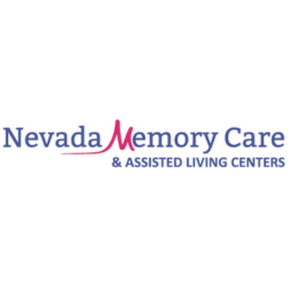Choosing the right assisted living service for your loved one is an important decision that affects their comfort, safety, and quality of life. Whether you are exploring options for a parent, grandparent, or another family member, it’s essential to consider both their needs and their personal preferences. This guide will walk you through the key factors to keep in mind when selecting the best assisted living community.
1. Understand What Assisted Living Means
Assisted living is a type of housing designed for seniors who may need help with daily activities such as bathing, dressing, taking medications, or preparing meals — but do not require full-time medical care like a nursing home provides. These communities often offer:
Private or semi-private rooms or apartments
- Assistance with daily tasks
- Meals and housekeeping services
- Social and recreational activities
- 24-hour support staff
Knowing the difference between assisted living, nursing homes, and independent living will help you choose the right type of care.
2. Assess Your Loved One’s Needs
Before you start touring facilities, take time to evaluate what kind of help your loved one truly needs. Consider:
- Physical needs: Do they require mobility assistance, help with bathing, or regular medical attention?
- Cognitive needs: Are they experiencing memory loss or early signs of dementia?
- Social needs: Do they prefer a quiet environment or an active community with group activities?
- Emotional needs: Would they benefit from a place that feels like home rather than a medical facility?
Having a clear understanding of these needs will help you narrow your search to facilities that can meet them.
3. Research and Create a Shortlist
Begin your search by looking for assisted living services in your area or in the location your loved one prefers. You can use:
Recommendations from friends, family, or doctors
- Online reviews and ratings
- Local senior care directories
- Community resource centers
Once you gather enough information, create a shortlist of 3–5 facilities to visit in person.
4. Visit and Tour the Facilities
A personal visit is one of the best ways to understand what a facility is truly like. During your visit, pay attention to:
- Cleanliness and safety: Are the rooms and common areas clean? Is the building well-maintained?
- Staff behavior: Do caregivers treat residents respectfully and kindly?
- Meal quality: Ask to see the dining area or sample a meal.
- Resident engagement: Do residents seem happy and active, or withdrawn and bored?
- Comfort and accessibility: Is the environment easy to navigate, especially for those with mobility challenges?
You should also ask if you can talk to current residents or their families for honest feedback.
5. Ask About Services and Amenities
Different assisted living facilities offer different levels of care and amenities. Be sure to ask:
- What is included in the monthly cost? (Meals, laundry, housekeeping, transportation, etc.)
- Are medical services available on-site?
- What activities and social programs are offered?
- Is transportation provided for doctor appointments or shopping?
- Are pets allowed?
Make sure the services match your loved one’s lifestyle and preferences.
6. Understand the Costs and Contracts
Assisted living can be expensive, so it’s important to understand all costs upfront. Ask for:
- A detailed list of monthly fees
- Information about any extra charges for additional care or services
- The payment schedule and deposit requirements
- The facility’s policy for rent increases
Also, read the contract carefully. Look for details on termination policies, refund rules, and what happens if your loved one’s needs change over time.
7. Check Licensing and Accreditation
Always make sure the facility is licensed by the appropriate state or local authorities. Accredited facilities are more likely to meet high standards of care and safety. You can also check with your state’s health department to see if the facility has any complaints or violations on record.
8. Consider Location and Accessibility
The location of the facility matters more than you might think. Being close to family and friends can make visits easier and help your loved one feel connected. Also, check how easy it is to access medical facilities, shopping centers, and other important services from the community.
9. Trust Your Instincts
While facts and figures are important, your intuition also matters. If something feels off during your visit — such as rushed staff, unhappy residents, or poor communication — take it seriously. Your loved one’s comfort, safety, and happiness should always be the top priority.
Frequently Asked Questions
Q1: How do I know if my loved one is ready for assisted living?
If they struggle with daily tasks, experience isolation, or have safety concerns at home, assisted living may be a good option.
Q2: Can my loved one bring personal furniture or belongings?
Most facilities encourage residents to bring familiar items to make their space feel like home.
Q3: Is assisted living covered by insurance?
Medicare generally does not cover assisted living, but long-term care insurance or certain state programs may help with costs.
Final Thought
Choosing the right assisted living service for your loved one takes time, research, and careful consideration. By assessing their needs, visiting potential facilities, asking the right questions, and trusting your instincts, you can find a place where they will feel safe, cared for, and happy. Remember — the goal is not just to provide care, but to give your loved one a supportive environment where they can continue to enjoy life.






